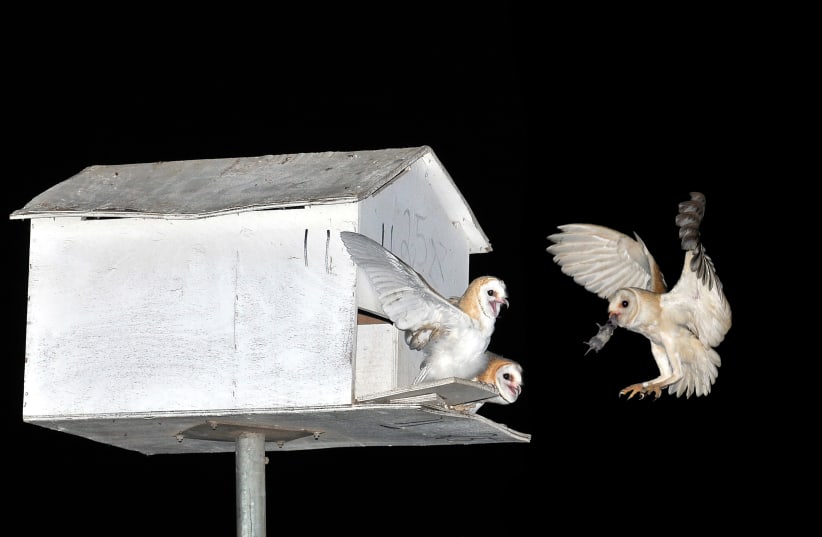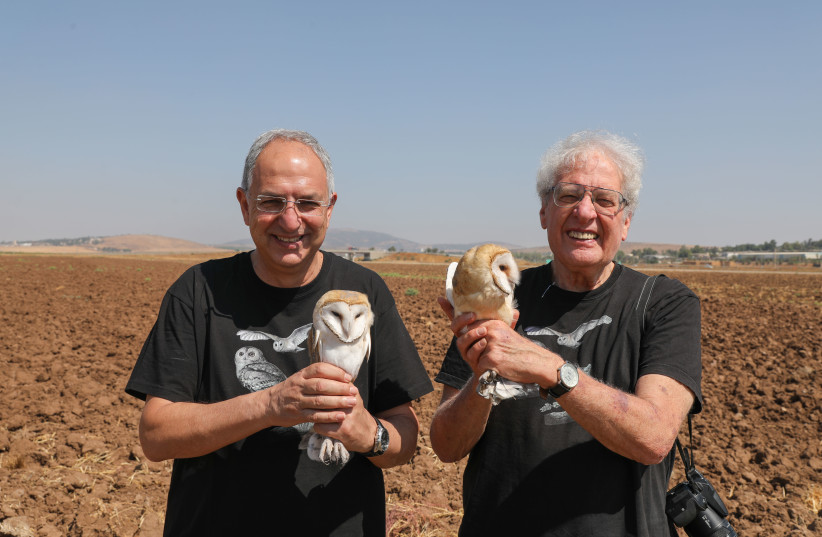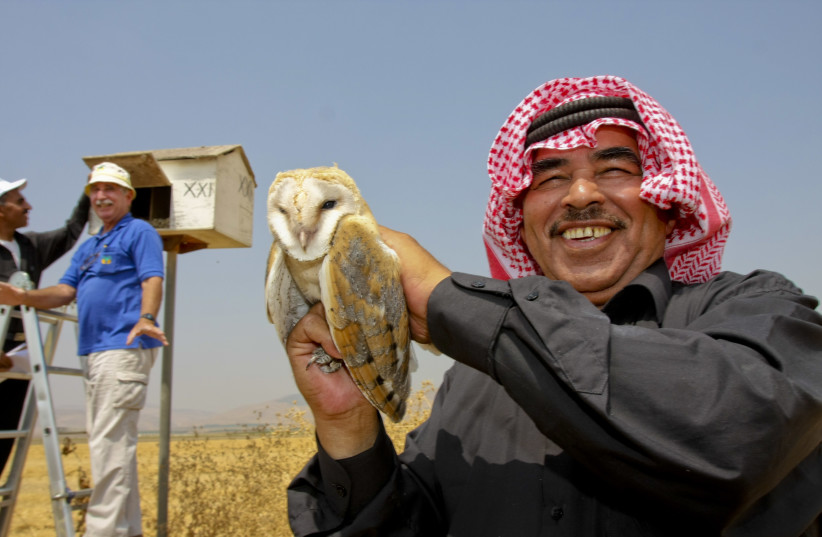Although the dove became a symbol of peace in the biblical episode of Noah’s ark, the barn owl – thanks to four decades of effort by Tel Aviv University (TAU) ornithologist Prof. Yossi Leshem – may be more appropriate a metaphor of harmony in the Eastern Mediterranean.
With its heart-shaped white countenance and two eyes facing – humanlike – straight ahead, Tyto alba is the most widely distributed species of owl in the world and can be found nesting and flying almost everywhere in the world except for polar and desert regions.
After hearing in the 1970s that barn owls were being used in Muslim Malaysia to eat rats that spread when rain forests were cut down to make palm oil, Leshem thought of implementing the idea in Israel. He has spread the news – and nesting boxes – in Israel and the Middle East since 1982 – with great success that has led to genuine regional cooperation.
“I am happy to see the vision take shape and hope that following the meeting, more countries want to promote environmentally friendly agriculture will join the project.”
Prof. Yossi Leshem
Now, a delegation headed by Cypriot Minister of Agriculture, Rural Development and the Environment Prof. Costas Kadis – himself an ecologist – has spent several days in Israel to learn more about the use of barn owls instead of dangerous pesticides to protect crops.
“I want to express my appreciation to you, Prof. Leshem, and your team for your hospitality. We came to gain experience from your very successful project using barn owls for biological control,” said Kadis.
“You have done amazing things, and we are trying to implement the idea in Cyprus. It can be adapted in many countries in the region, and during this conference I discussed with my fellow agricultural ministers the possibility of regional cooperation on this. I met with Israel’s Regional Cooperation Minister Esawij Freij, and we will prepare a memorandum of understanding among Greece, Israel and Cyprus to use your experience in other countries as well.”
The voles must go
In the 1980s, recalled Leshem – who besides his affiliation with TAU’s zoology department is also a member of the Israel Society for the Protection of Nature (SPNI) – he saw thousands of storks and other migrating birds die from pesticides spread by farmers growing alfalfa in the Hula Valley as cow feed.
“It drove me crazy,” he told The Jerusalem Post in an interview on Thursday. “I heard the noises in the fields of voles – rodents that are stockier than mice, with shorter tails, larger eyes and smaller, less prominent ears. There were millions of them. We put 10 nesting boxes in Kibbutz Neot Mordechai in the Upper Galilee so the barn owls would eat them.”
There are 11 owl species in Israel, but the barn owl is the best because they live under roofs, in barns and elsewhere and are more connected to people.
“At first, kibbutz farmers poisoned the voles even though we brought the barn owls. One doesn’t have to bring more owls from the zoo because they come by themselves. They can’t live in glass-faced cities like Tel Aviv, so they prefer to nest in boxes,” Leshem explained.
Every year, each of these 300-gram small birds eats 2,000 to 6,000 rodents, swallowing them whole; then they vomit out the feathers, bones, cartilage and claws and keep the meat. There are now 5,000 owl nesting boxes in farms all around Israel – the Beit She'an Valley, with its year-round warm weather, home to the largest concentration of owls – that were installed by TAU, the SPNI, and then the Agriculture and Environmental Protection ministries. It became a national project.
“We have seven places around the country where staffers monitor the owls and their chicks,” declared Leshem. "We run annual seminars for farms so that they understand that the birds do the job of killing rodents cheaply, reducing the use of pesticides by 50%. Pesticides seep into the soil and water, killing larger animals when they eat those that are poisoned. Pesticides penetrate alfalfa and enter the milk of cows. The pesticides harm people and the environment."
Jordan and the PA get on board
He initiated cooperation with Jordan and the Palestinian Authority in 2002.
“As we put rings on the feet of the owls, we knew that they moved between Israel and nearby areas," he said. "We saw that Israeli males mated with Jordanian females and vice versa. Jordan and the PA each have 400 nesting boxes, and more recently, Greece and Cyprus joined. Last fall we went to the Dubai Expo talking about the nesting project, and a professor in Morocco joined in. Everybody loved the idea. But Israel is the world leader in this project.
There are two Egyptian scientists who want to join, and we expect Algeria and Tunisia to participate as well. We can’t work with Syria or Lebanon, but they have the same agricultural problems as everywhere in the region.”
Birds have no geographical boundaries, he continued. “I am happy to see the vision take shape and hope that following the meeting, more countries want to promote environmentally friendly agriculture will join the project.”
The Environment and Climate Change portal is produced in cooperation with the Goldman Sonnenfeldt School of Sustainability and Climate Change at Ben-Gurion University of the Negev. The Jerusalem Post maintains all editorial decisions related to the content.


